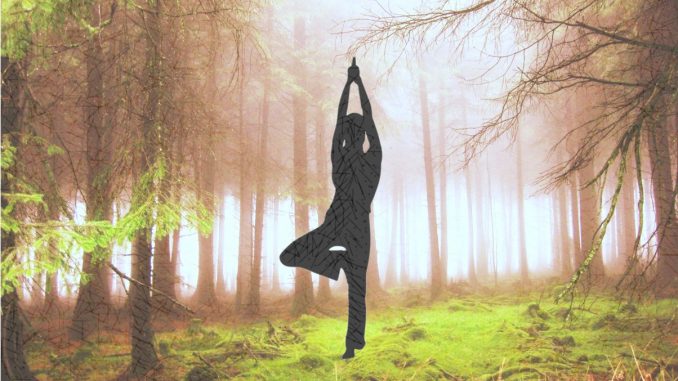
On 20th December 2017 the BBC will broadcast a program about Judi Dench and her love for trees (edit 9/11/2019, not currently on iplayer, but you can see clips). The press release says “With the latest scientific techniques and equipment at her disposal, she is able to truly understand how trees work, and gain an insight into their secrets. Judi learns just how effective trees are as carbon capture machines that are fighting to protect our planet.” Like many people, Judi planted trees in memory of family and friends who have passed away. These days we also see woodland burials – and some claims of funeral methods that will turn you into a tree (some more dubious than others).
Well, we think that planting a tree is great – and that maybe we should plant more trees that we can enjoy while we are alive too. We also have a cunning wheeze on how to become part of the forest without having to push up the daisies. Here is how:
Trees make wood – that wood is built from carbon (C), hydrogen (H) and oxygen (O) atoms via photosynthesis. The carbon and the oxygen atoms come from the air – specifically the carbon dioxide: CO2. During photosynthesis, all of the carbon atoms of that CO2 are used to make the sugar to build wood, along with half of the oxygen atoms.
Approximately half of the dry mass of wood is the carbon atoms, and about 40% is oxygen atoms – and once the wood is made, those atoms are stuck there in the wood for as long as it exists – which could be a considerable length of time, even without considering that the wood could end up in something else with a long life of its own.
We breathe in oxygen and breathe out carbon dioxide – the carbon (and a few of the oxygen atoms) in that carbon dioxide come from us. Literally. Have you ever wondered what happens when you lose weight? Where does it go? The surprising answer is that you breathe most of it out. If you had imagined it gets turned into energy (or you poop it out) then you would be wrong – in the same way as many doctors, dieticians and personal trainers …as this paper in the December 2014 issue of the BMJ points out.
So – if you visit a forest and do some exercise to lose weight (a nice walk, jog, cycle ride, or rope swing from tree to tree) some of the weight you lose will end up in the forest. What was part of you will end up as part of trees.
That sounds fun…but we cannot have fun without maths:
That paper in the BMJ gives us some figures about the carbon we breathe out: “When somebody loses 10 kg of fat (triglyceride), 8.4 kg is exhaled as CO2. The remainder of the 28 kg total of CO2 produced is contributed by inhaled oxygen”
If you breathe that CO2 out while in a forest – while the trees are photosynthesising – well that CO2 might end up as wood in the trees.
If you manage to lose 1 kg during your trips to the forest, then potentially 840 grams of that is in your CO2 – now available for making wood. Losing 1 kg means breathing out 2.8 kg of CO2 in total – the 840 grams of that which comes from your body is almost all the mass of carbon atoms.
Because the vast majority (~90%) of that mass you lose though breathing out is carbon atoms in CO2 potentially three quarters of the weight you lose can end up in the trees!
We can work out the volume of wood using basic density – which is dry mass divided by volume when green. It’s about 350 kg/m3 for the spruce growing in our forests – and up to about twice that for the hardwoods. So your 0.75 kilo contribution to the forest represents a cube of wood with sides of about 10 cm. Not bad!
So if you want to become part of the forest – go into the forest and enjoy it.
With thanks to BMJ 2014;349:g7257 for the harder calculations

Leave a Reply
You must be logged in to post a comment.